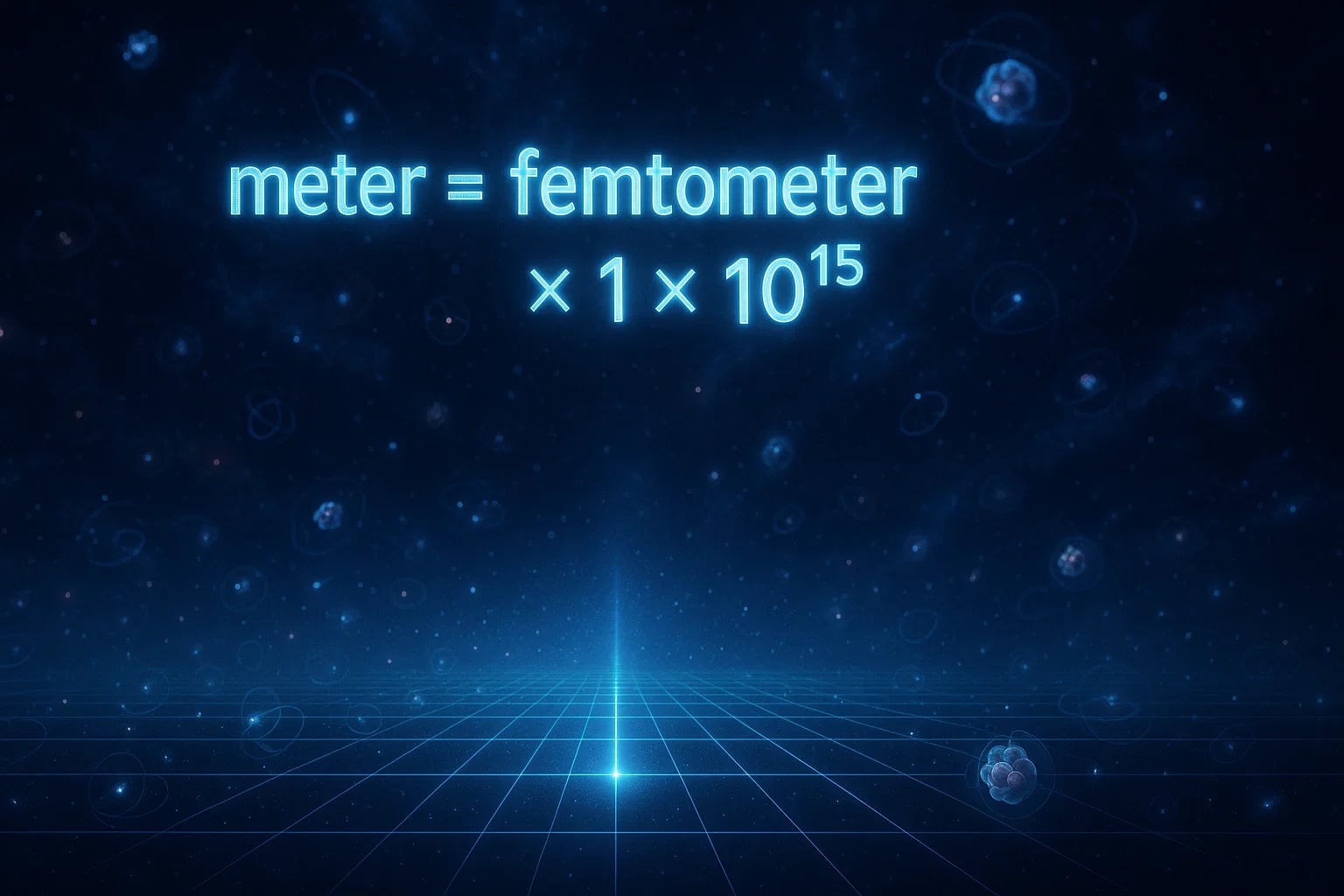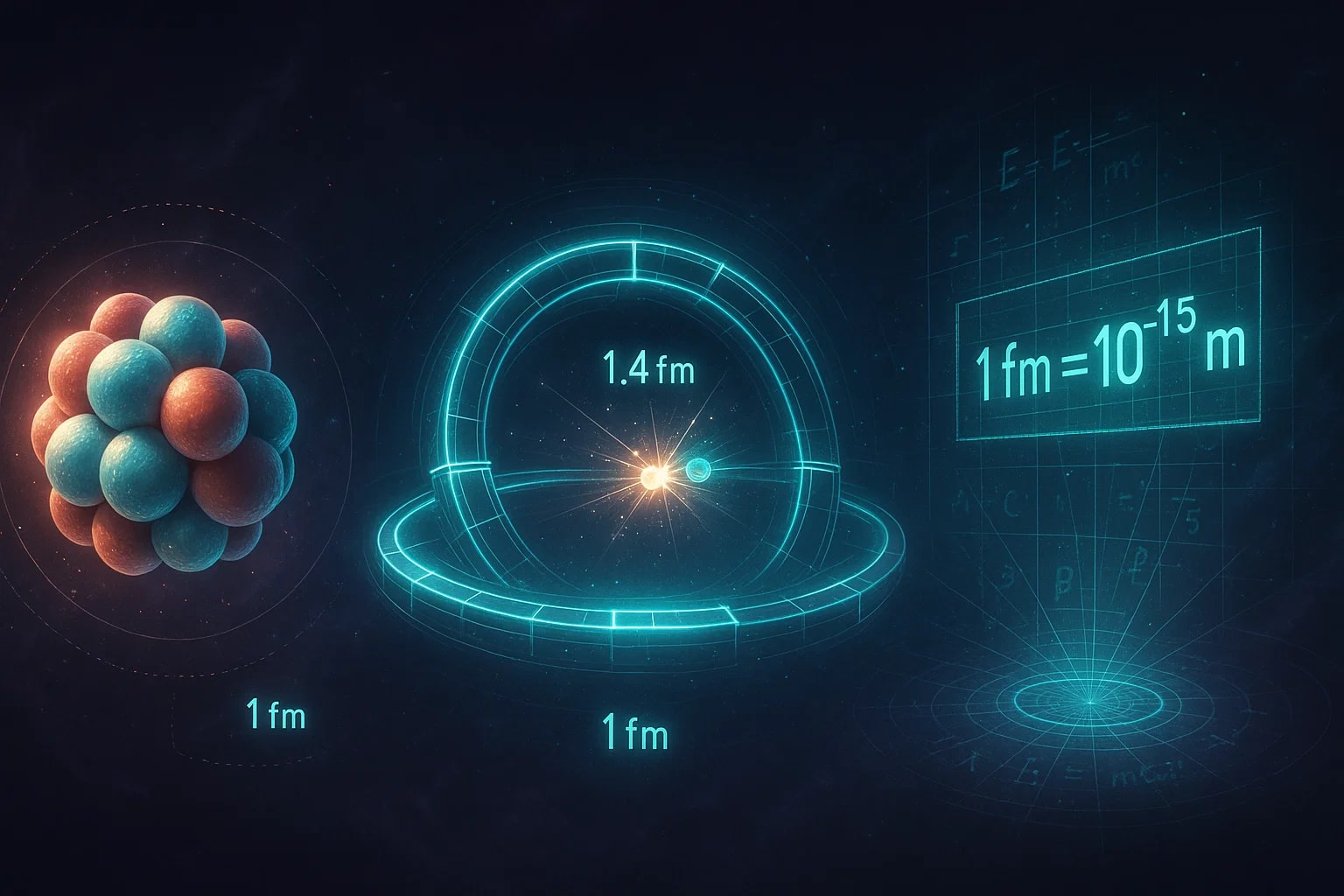femtometer to meter – How to convert fm to m
Switching from femtometer to meter takes us deep into the world of nuclear physics. The femtometer, sometimes called a fermi, is used to measure distances inside atomic nuclei, while the meter is the universal SI unit of length. Knowing how to convert fm to m is key for interpreting scientific texts and research.

What is a Femtometer (fm)?
A femtometer is one quadrillionth of a meter:
1 fm = 10⁻¹⁵ m.
It is mainly used in particle physics and nuclear science to describe subatomic scales such as the size of protons, neutrons, and nuclei.
What is a Meter (m)?
The meter is the SI base unit of length, defined by the distance light travels in 1/299,792,458 of a second. It serves as the global foundation for measurement in science, engineering, and everyday life.
How to Convert fm to m
The formula is:
meter = femtometer × 1 × 10⁻¹⁵
For example, let’s convert 5 × 10¹⁵ fm into meters:
meter = 5 × 10¹⁵ × 10⁻¹⁵ = 5 m
So, 5 × 10¹⁵ fm = 5 m.
For further calculations, try the Length Converter or explore the broader Conversion Tools.
Do you know?
-
The femtometer is named after Enrico Fermi, a pioneer in nuclear physics.
-
Atomic nuclei are typically a few femtometers in size; for example, a proton’s radius is about 0.84 fm.
-
In particle accelerators, distances and interactions are often described at the femtometer scale.
-
The meter, though used for all scales, connects even to this tiny world thanks to scientific notation.
Nuclear Physics on a Tiny Scale
In the 20th century, as scientists probed deeper into the atom, they needed a unit smaller than the nanometer or picometer. The femtometer emerged as the perfect fit for describing the size of nuclei.
Experiments in particle accelerators, such as those at CERN, often describe collision events and forces in femtometer terms. Translating these values into meters makes them universally understandable, even though they represent unimaginably small distances.
This ability to convert between femtometers and meters helps bridge nuclear science with broader physics, showing how the SI system connects every scale of the universe.

From Subatomic to Universal
The conversion from femtometer to meter highlights how versatile the metric system is. The same meter that describes a person’s height can also, through scientific notation, describe the size of a proton.
By mastering this conversion, you can read nuclear physics research with clarity, connecting the smallest known distances with the universal base unit.

